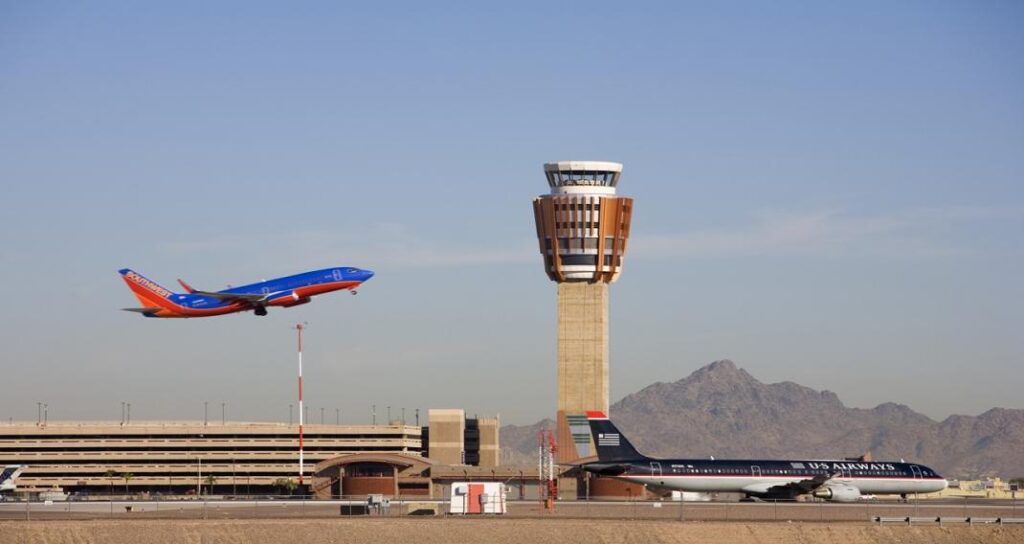Global Avionics Round-Up from Aircraft Value News (AVN)

Phoenix Sky Harbor’s Air Traffic Control Tower and TRACON (Photo: Jacobs)
As global air travel rebounds with a vengeance, the aviation industry is once again grappling with a painful bottleneck: overcrowded airports and a dangerously understaffed air traffic control system. Delays, diversions, and miscommunication are on the rise.
However, the avionics sector, long the invisible hand of flight safety and navigation, is emerging with next-gen solutions that promise to ease the strain from the inside out.
At the heart of this technological revolution is the move toward more autonomous flight management. Aircraft are increasingly being equipped with avionics systems capable of advanced trajectory prediction and real-time data sharing with both pilots and ground systems.
This evolution reduces reliance on overburdened human controllers and enables aircraft to make more precise in-flight decisions. The introduction of Flight Management System upgrades with artificial intelligence (AI)-assisted route optimization allows pilots to reroute mid-flight to avoid congestion, saving both time and fuel.
One of the more promising tools gaining traction is System Wide Information Management, or SWIM. This data-sharing framework gives pilots, controllers, and airport operations access to the same stream of real-time information. The result is better coordination, fewer delays, and far more efficient ground handling, even at packed airports.
Combined with enhanced Automatic Dependent Surveillance–Broadcast (ADS-B) capabilities, aircraft are becoming smarter nodes in a constantly updating airspace network.
Remote Tower technology, initially rolled out in Europe and now being explored more seriously in the U.S., adds another layer of resilience. With high-resolution cameras, radar integration, and data fusion capabilities, these virtual control centers can monitor and manage traffic at multiple regional airports from a centralized facility.
Scalable solutions…
For regions that can’t quickly recruit and train new controllers, these solutions offer a scalable alternative that leverages avionics innovation.
Equally important is the digital transformation of airspace management. NASA and the FAA, in partnership with avionics OEMs, are developing Uncrewed Traffic Management (UTM) tools that are now being adapted for conventional aircraft. The eventual goal is to create a harmonized digital sky where both manned and unmanned aircraft can navigate fluidly under automated systems, thereby reducing human error and communication lags.
While these technologies are still maturing, they’re gaining real-world traction faster than many expected. Airlines and airport authorities are facing hard economic and logistical realities, forcing them to turn to avionics firms for answers.
From predictive analytics that help airports better manage gate assignments and turnaround times to cockpit-based spacing tools that let aircraft fly more efficiently during approach and landing, avionics is no longer just a support system; it’s also a strategic weapon against operational gridlock.
As delays grow more intolerable and controller shortages more dire, the momentum behind these avionics innovations is only accelerating. The skies of the future will not just be crowded—they’ll be smarter, and much of the credit will go to the glass cockpit and the silicon behind it.
This article originally appeared in our partner publication, Aircraft Value News.
John Persinos is the editor-in-chief of Aircraft Value News.